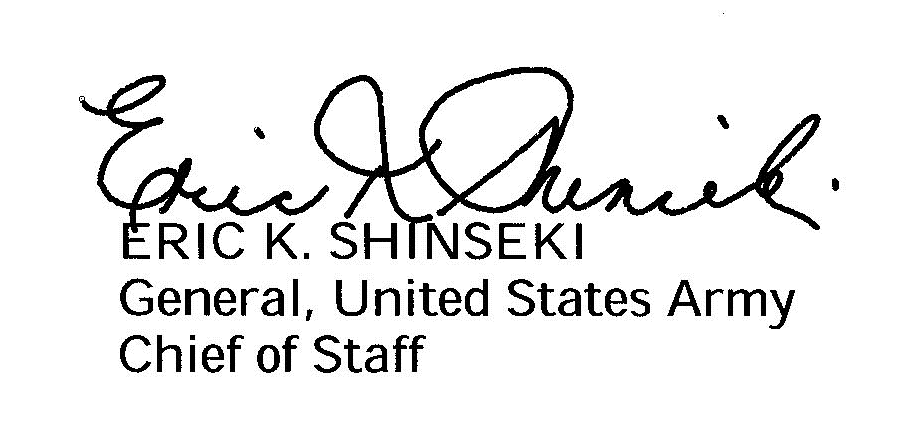
In the decade since the end of the Cold War, the strategic environment has become less stable, more uncertain, and more dangerous. The international order is again in transition. While our traditional adversaries seem less menacing, others have developed the capacity to threaten our national interests. Friction between the forces of integration and disintegration has increased the nature and scope of potential threats. All of our armed forces must be ready to deal with these threats, but land forces alone have the ability to place enough "boots on the ground" and interact with populations, directly and continuously. In this capacity for human interaction, ground forces are unique. The Army provides human interaction—the basis for our warfighting doctrine, our crisis management philosophy, and our engagement strategy.
Warfighting is complex, but the historical lessons of the military art, the principles of war, the tenets of Army operations, and our warfighting tactics, techniques, and procedures—all the fundamental imperatives—boil down to several rules of thumb applicable at every level of war. First, we win on the offense; we must be able to defend well, but you win on the offense. Next we want to initiate combat on our terms—at a time, in a place, and with a method of our own choosing—not our adversary’s, our choosing. Third, we want to gain the initiative and retain it for as long as possible—and never surrender it unless forced to. Fourth, we want to build momentum quickly. And finally, we want to win—decisively.
These rules of thumb require commanders to master transitions. Transitions—passages of lines, reliefs in place, obstacles and rivers, going from offense to defense and back again, projecting power through airheads and beachheads, and transitioning from peacekeeping and warfighting and back again—sap operational momentum. Mastering transitions is key to setting the conditions for winning decisively. Forces that can do so provide strategic flexibility to the National Command Authorities, who need as many options as possible in a crisis. The Army has historically provided those capabilities and options with the versatility and agility of its formations.
The Army performs missions today similar to those it has performed throughout our history. The places and the methods differ, but the qualities demanded of The Army are unchanged—an ethos of service to the Nation, the readiness to fight and win wars, and a willingness to accomplish any mission the American people ask of us. As we transform The Army into a force that is strategically responsive and dominant across the full range of military operations, our role as servant to the Nation remains clear.
American Soldiers remain the centerpiece of our formation. Their character and our values are the threads from which we make whole cloth. Soldiers define our relationship with the American people—loyalty to the Constitution, the Nation, and its citizens; commitment to service; professional excellence; and obedience to civilian authority. Soldiers accept hardship and danger, and sometimes injury and death, in pursuit of these ideals. For over 226 years, the American people have relied on The Army to protect and defend the Constitution and to guarantee their freedom, security, and interests.
The Army serves.
